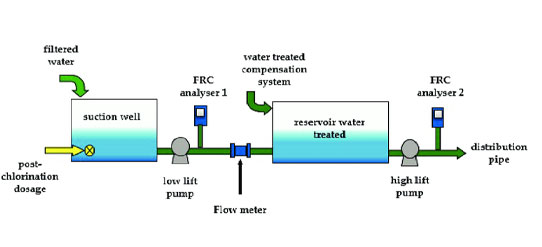Chlorination
Chlorination is the chemical disinfection of treated wastewater by using chlorine. This method removes pathogens and prevents waterborne illnesses.
The pathogenic organisms include viruses, bacteria and protozoans.
Cholera, dysentery, typhoid etc., are waterborne illnesses.
Chlorination is essential to disinfect the water or make the water supplies potable. It is the stage before the water runs off into oceans, rivers and streams.

How Chlorine Destroys Microorganisms?
Chlorine compounds destroy microbes by oxidising their cellular material. After oxidation, the cell membrane weakens, and chlorine enters the cell. As a result, it disrupts cell respiration and DNA activity. And, we know how these two processes are necessary for cell survival. So, by disrupting cell functionality, chlorine destroys different microbes.
Chlorine dosing
When chlorine is dosed into a facility's water distribution system routinely it is injected continually in order to maintain a constant free chlorine residual.
Chlorine is usually dosed as a concentrated solution of sodium hypochlorite which, when dissolved in water, forms hypochlorous acid. Hypochlorous acid is the active disinfectant form of chlorine often described as 'free' or 'active' chlorine.
The combined concentration of hypochlorous acid and hypochlorites is often described as 'total chlorine'.
